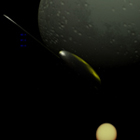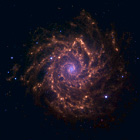|
Demostrator II News!! SPACE CLOUDS
|
|
| Alpha | Date: Saturday, 31.12.2011, 19:15 | Message # 1 |
 Space Tourist
Group: Users
 Spain
Spain
Messages: 31
Status: Offline
| News pictures of space clouds lighted by stars.
It still works at 12 - 15 Fps. I hope to get a full working system able to simulate any space object retaining no less than 15 FPS.
Executable demostrator will come soon.
Edited by Alpha - Monday, 16.01.2012, 00:52 |
| |
| |
| Alpha | Date: Sunday, 08.01.2012, 13:17 | Message # 2 |
 Space Tourist
Group: Users
 Spain
Spain
Messages: 31
Status: Offline
| And some titan and nebula pics
Edited by Alpha - Monday, 16.01.2012, 00:48 |
| |
| |
| Alpha | Date: Sunday, 08.01.2012, 13:18 | Message # 3 |
 Space Tourist
Group: Users
 Spain
Spain
Messages: 31
Status: Offline
| finally Some near surface pictures:
|
| |
| |
| curiousepic | Date: Sunday, 08.01.2012, 16:10 | Message # 4 |
 Space Pilot
Group: SE team
 United States
United States
Messages: 141
Status: Offline
| Nice, you already have one-up on SE - surface features on Titan 
My ideal preferences for visual design of the mothership and technology in SE
Harry Potter and the Methods of Rationality
Edited by curiousepic - Sunday, 08.01.2012, 17:04 |
| |
| |
| Alpha | Date: Tuesday, 10.01.2012, 10:47 | Message # 5 |
 Space Tourist
Group: Users
 Spain
Spain
Messages: 31
Status: Offline
| Well, surface features could not be generated from textures and now i don't know how to generate fully procedural real features without terrain textures. Anyway i have some ideas that i will apply later.
In my first demostrator craters and cracks in terrain where not accidental features so i can control it and put them where i want. Myabe i will develope some kind of planet editor with an iterative genetic mechanism that tries to mimetize a real terrain using a combination of procedural features. If i get it, probably i will be able to produce real terrains without textures and essentially it means that i will retain the minimal memory size of this simulation without loose precision.
Store a crater center needs far less memory than store the equivalent texture, Moreover it have no limit of precision, it just could develope it to infinite. This approach produces more homogeneous shapes so it loses realism ... or maybe not if you produce an algorithm able to produce enough variations in a controlled fashion. So i can not say how i will do it but i think it's possible.
Maybe i will be defeated by textures and finally i should integrate it in my sim, but really.... i prefer to not do it.
Can you imagine entire galaxies in an old floppy disk? maybe it's possible using procedural mechanisms.
Edited by Alpha - Tuesday, 10.01.2012, 10:53 |
| |
| |
| SpaceEngineer | Date: Tuesday, 10.01.2012, 14:58 | Message # 6 |
 Author of Space Engine
Group: Administrators
 Russian Federation
Russian Federation
Messages: 4800
Status: Offline
| Quote (Alpha) Store a crater center needs far less memory than store the equivalent texture
What? You store craters using their coordinates? But Moons have billions of craters! 
I use textures for planets, but this does not mean that I generate all of planet at once. Textures are generated only in visible area and only for a certain level (resolution). When you land on a planet, more detailed textures are generated, but the visible area reduces. When memory is filled, old textures from the currently unvisible areas get deleted. Or it can be possible using another technique, so when the camera flies away from the terrain patch, its child gets deleted immediately. So a planet at full detail from space to surface uses 300-400 Mb of video memory for textures (with no compression).
However, storing craters by coordinates makes possible terramorphing up to asteroid impact simulation (if your engine supports dynamical update of generated terrain).
Quote (Alpha) Can you imagine entire galaxies in an old floppy disk? maybe it's possible using procedural mechanisms.
SpaceEngine will be able to generate fully procedural galaxies (this is in developement now). So, SE can work in full procedural mode, using no catalog data and textures, only the executable and a couple of shader programs and config files. However, SE's executable is already about 2 Mb...
*

|
| |
| |
| naximar | Date: Tuesday, 10.01.2012, 19:51 | Message # 7 |
|
Observer
Group: Users
 Croatia
Croatia
Messages: 11
Status: Offline
| Quote (SpaceEngineer) SpaceEngine will be able to generate fully procedural galaxies (this is in developement now). So, SE can work in full procedural mode, using no catalog data and textures, only the executable and a couple of shader programs and config files. However, SE's executable is already about 2 Mb...
This is very cool.
SpaceEngineer, will be possible that every galaxy has different set of majority stars so they don't look simmilar to Milky Way?
For example, if some galaxy in reality has blue stars on most of her parts, will it be rendered the same in Space Engine.
*
Edited by naximar - Tuesday, 10.01.2012, 19:57 |
| |
| |
| SpaceEngineer | Date: Wednesday, 11.01.2012, 00:10 | Message # 8 |
 Author of Space Engine
Group: Administrators
 Russian Federation
Russian Federation
Messages: 4800
Status: Offline
| Quote (naximar) SpaceEngineer, will be possible that every galaxy has different set of majority stars so they don't look simmilar to Milky Way? For example, if some galaxy in reality has blue stars on most of her parts, will it be rendered the same in Space Engine.
Of course 

|
| |
| |
| Alpha | Date: Wednesday, 11.01.2012, 09:37 | Message # 9 |
 Space Tourist
Group: Users
 Spain
Spain
Messages: 31
Status: Offline
| Quote (SpaceEngineer) What? You store craters using their coordinates? But Moons have billions of craters!
Probably using some kind of procedural mechanism to generate crater coordinates in real time. The same could be used for mountains. cracks etc... So i would like to reduce a planet terrain to a set of data of 20 -30 float numbers that control procedurally generated mountains, lakes, rivers, etc.
The problem i should solve is to create a program able to compare a procedural terrain with real relief textures and then use some kind of genetic algorithms to refine procedural terrain to the point of no or little difference. Then you will end up with a fully procedural terrain without need of textures. I know how to work in textures but really i prefer to not do it.
Quote (SpaceEngineer) However, storing craters by coordinates makes possible terramorphing up to asteroid impact simulation (if your engine supports dynamical update of generated terrain).
Exactly!! this is what i'm searching for, not only asteroid impacts, but planet impacts, planet disintegration, ships collision, Explosions, sea waves, etc...
Yes i'm updating position of triangles every frame using the stored mesh points, so if i get a morphing mechanism affecting only a limited zone i can produce real time terrain changes... really i can do it right now.
Again, anything you are interested i'm open to share it.
Quote (SpaceEngineer) SpaceEngine will be able to generate fully procedural galaxies (this is in developement now). So, SE can work in full procedural mode
This is interesting, you are producing real terrains without textures? i mean craters, mountains, etc...
|
| |
| |
| Alpha | Date: Wednesday, 11.01.2012, 09:42 | Message # 10 |
 Space Tourist
Group: Users
 Spain
Spain
Messages: 31
Status: Offline
| Maybe the real to procedural terrain program could be interesting, this weekend i will try to do something on it.
|
| |
| |
| SpaceEngineer | Date: Wednesday, 11.01.2012, 09:50 | Message # 11 |
 Author of Space Engine
Group: Administrators
 Russian Federation
Russian Federation
Messages: 4800
Status: Offline
| Quote (Alpha) This is interesting, you are producing real terrains without textures? i mean craters, mountains, etc...
Maybe we have some misunderstanding here. What do you mean by saying "using textures"? In SE, I use textures to render a planet: a height map to create a mesh and normal map for lighting, and color (diffuse) texture. But these textures are fully procedural generated (except for some planets in our Solar System). Procedural generation is controlled by a couple of parameters - all this is needed for generation and rendering of a planet.
*

|
| |
| |
| Alpha | Date: Wednesday, 11.01.2012, 10:23 | Message # 12 |
 Space Tourist
Group: Users
 Spain
Spain
Messages: 31
Status: Offline
| Quote But these textures are fully procedural generated
Ok i understand, i'm generating it too (in a primitive way compared to you). So you generate mesh to pass it to vertex and pixel shaders... interesting, Anyway it could be interesting too to produce predefined objects like mountains and craters to allow real time changes in terrain and reduce texture ressolution.
Maybe you can accelerate mesh generation using predefined objects?
Edited by Alpha - Wednesday, 11.01.2012, 10:24 |
| |
| |
| naximar | Date: Wednesday, 11.01.2012, 10:46 | Message # 13 |
|
Observer
Group: Users
 Croatia
Croatia
Messages: 11
Status: Offline
| Quote (SpaceEngineer) Of course
Thanks, I would like that. 
|
| |
| |
| Alpha | Date: Thursday, 12.01.2012, 09:34 | Message # 14 |
 Space Tourist
Group: Users
 Spain
Spain
Messages: 31
Status: Offline
| I see a major difference between both systems, while i'm generating a primitive height map, color map, and normal map for every Vertex and i should regenerate it every time, you are doing it for every pixel but you can reuse it.
Depending on how you regenerate mesh maybe you can produce a less deffined height map and use some kind of interpolation for vertex height and normal values. Color map should be defined at full ressolution unless you use some kind of predefined pics to accelerate mesh generation. I insist in the use of hiperelliptical shapes or an equivalent method that allow you to use the same mechanism for mesh generation and collision detection, on the contrary you will have problems computing collisions.
|
| |
| |